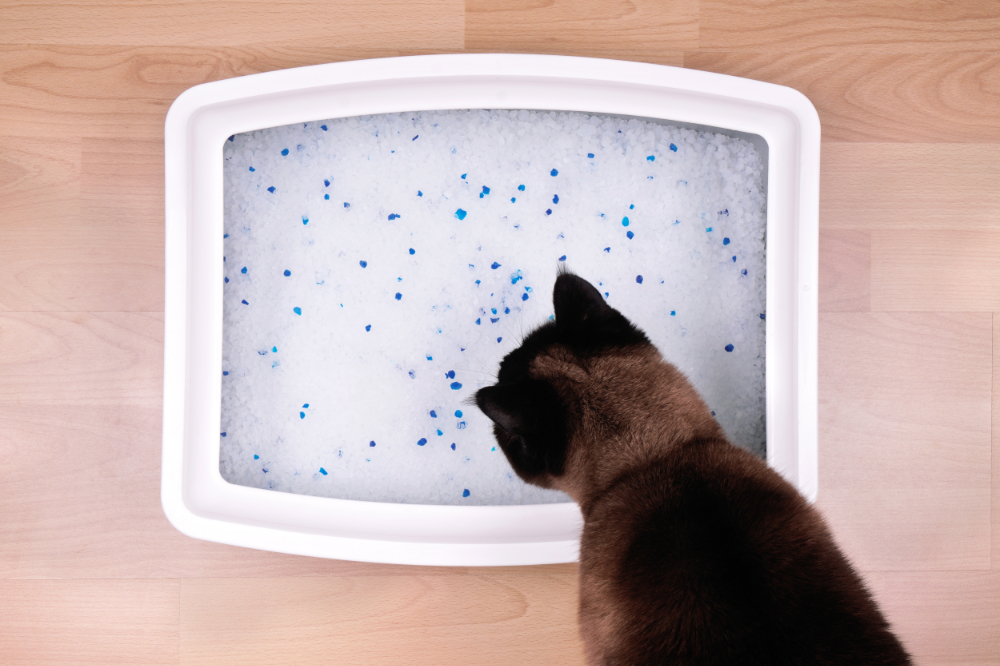For cat owners, the litter pan is not just a necessity but a cornerstone of a clean and comfortable home. However, keeping this essential feline facility clean and fresh can sometimes feel like a daunting task. Fear not! With the right approach and some smart strategies, maintaining a pristine litter pan environment can be surprisingly simple and efficient. In this comprehensive guide, we’ll delve into the art of cleanliness, exploring tips, tricks, and best practices to ensure your cat’s litter pan is always inviting, odor-free, and hygienic.
Choose the Right Litter
The first step toward maintaining a clean litter pan begins with choosing the right litter:
Clumping vs. Non-Clumping: Clumping litter forms solid clumps when it comes into contact with moisture, making it easier to scoop out waste daily. Remember to keep the depth of the clumping litter at 3 inches. This keeps the litter from sticking to the pan.
Non-clumping litter absorbs moisture but doesn’t form clumps, requiring more frequent full changes.
Crystal Litter: This litter only needs to be changed once a month. It absorbs liquids. Some brands change color to indicate any health problems. Solids still need to be scooped daily.

Scented vs. Unscented: While scented litters can mask odors temporarily, some cats prefer unscented options. Opt for a mild, natural scent or an unscented variety to accommodate your cat’s preferences.
Dust-Free: Dust-free litter reduces mess and prevents respiratory issues for both cats and their owners. Look for low-dust or dust-free options to create a cleaner environment.
Regular Scooping: The Key to Cleanliness
Daily Scooping: Scoop the litter pan at least once a day, removing clumps and solid waste promptly. This prevents odors from permeating the area and maintains a fresh environment for your cat.
Invest in a Good Scoop: Use a sturdy, metal or plastic scoop with slats or holes to sift out clumps efficiently. Scoops with longer handles provide better reach, making the scooping process more convenient.
Regular Cleaning and Full Changes
Full Changes: Completely change the litter and clean the pan every 1-2 weeks, depending on your cat’s usage and the type of litter. Dispose of the old litter, wash the pan with mild soap, and dry it thoroughly before adding fresh litter.
Use Liners (Optional): Litter pan liners can make full changes easier. However, some cats may find them uncomfortable, so monitor your cat’s reaction and choose liners accordingly.
Odor Control and Freshening Tips
Baking Soda: Sprinkle a thin layer of baking soda at the bottom of the clean litter pan before adding fresh litter. Baking soda helps neutralize odors naturally.
Charcoal Filters: Some litter boxes come with built-in charcoal filters that absorb odors. Replace these filters regularly for optimal odor control.
Regular Air Circulation: Ensure the litter pan is placed in a well-ventilated area. Good air circulation helps reduce odors and keeps the litter fresh longer.

Multiple Litter Pans for Multiple Cats
If you have multiple cats, providing each cat with its own litter pan can prevent territorial issues and ensure cleanliness:
One Per Cat Plus One: The general rule is to have one litter pan per cat, plus an extra one. For example, if you have two cats, provide three litter pans. This abundance of options reduces competition and promotes cleanliness.
Conclusion
Maintaining a clean and fresh litter pan isn’t just about ensuring your cat’s comfort – it’s about creating a harmonious living environment for both you and your feline companion. By choosing the right litter, scooping regularly, performing full changes, and implementing odor control techniques, you can effortlessly uphold cleanliness in your cat’s private space. A clean litter pan not only prevents odors but also fosters a positive relationship between you and your pet, ensuring a happy, healthy, and harmonious home. Remember, a little diligence and the right approach can transform the often-daunting task of litter pan maintenance into a manageable and rewarding experience.


